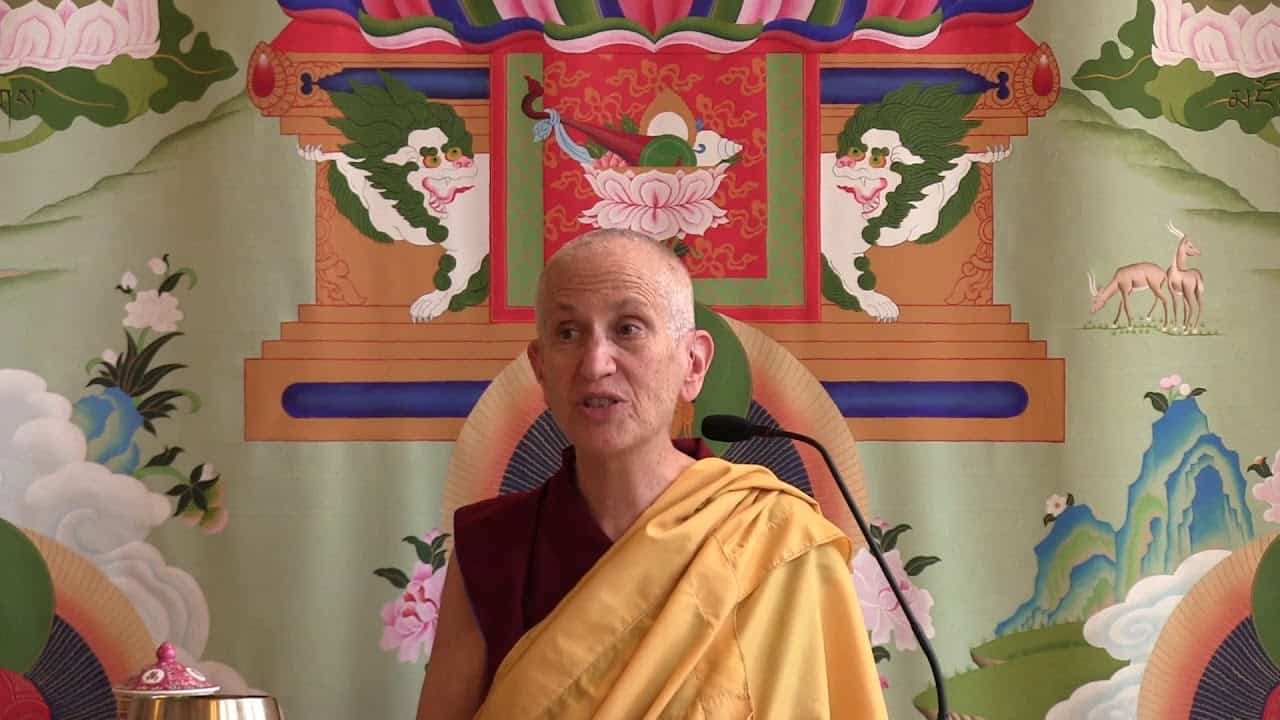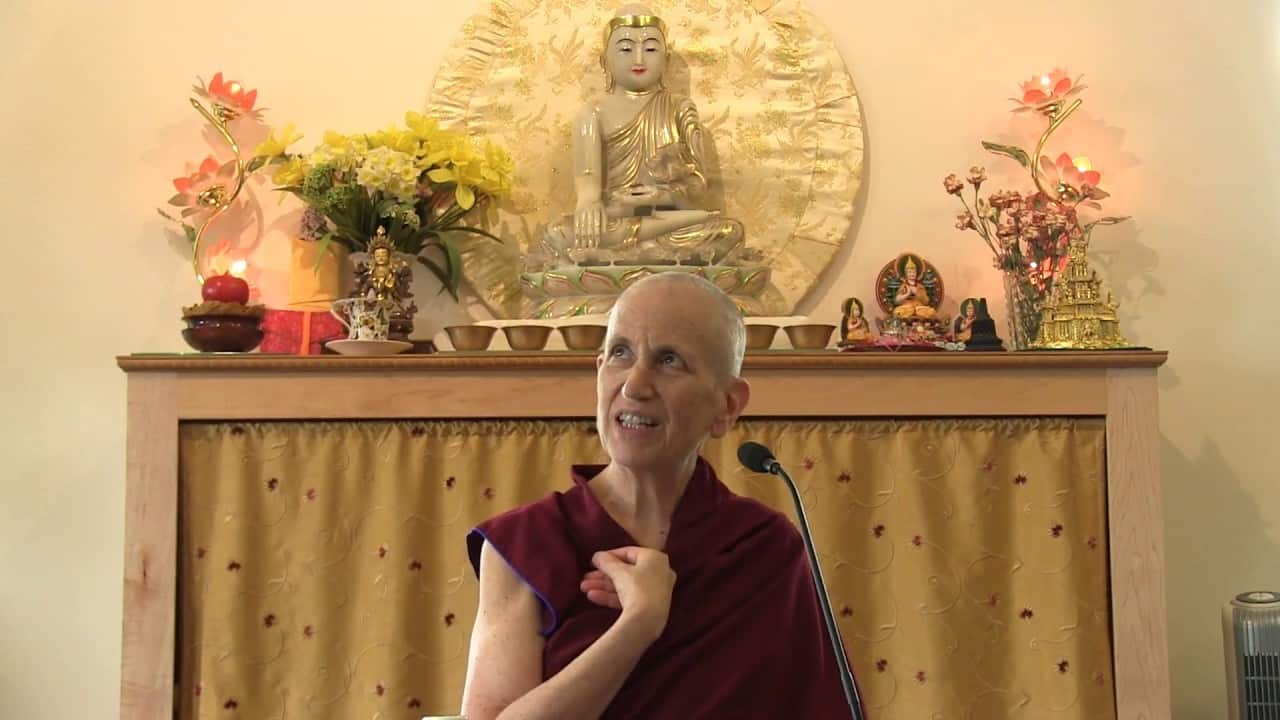The relationship between the two truths
The relationship between the two truths
The text turns to training the mind on the stages of the path of advanced level practitioners. Part of a series of teachings on the Gomchen Lamrim by Gomchen Ngawang Drakpa. Visit Gomchen Lamrim Study Guide for a full list of contemplation points for the series.
- Two levels of deception to discern
- The faults that would occur if an object and its emptiness were the same or different
- Knowing a conventional truth does not mean we know it as a veiled truth
- The meaning and different types of non-duality
- The divisions of emptiness and why list so many emptinesses
141 Gomchen Lamrim: The relationship between the two truths (download)
Contemplation points
- How do the Svatantrikas divide truths into “real” and “unreal?” Refute this from the Prasangika view. How would Prasangikas then divide truths into “real” and “unreal” in relation to the world? Why is the distinction “in relation to the world” important?
- What does it mean that the two truths are one nature, but nominally different? Think of some examples of objects that are one nature, but nominally different, and those that are not of one nature. What is the difference between being identical and being of one nature?
- The two truths are established by two different types of minds. What type of mind establishes conventional existence and what establishes its emptiness?
- What does it mean that something can’t bear ultimate analysis?
- Why is it so important to study conventional truths before ultimate truths? How does that prepare the mind and prevent us from falling to the extreme of nihilism?
- Why is it that although we study conventional truths first, we only know them as veiled after we realize emptiness?
- What is the purpose of learning about so many different types of emptiness if, when you have a direct realization of emptiness, you perceive the emptiness of all things without being able to differentiate between them?
Venerable Thubten Chodron
Venerable Chodron emphasizes the practical application of Buddha’s teachings in our daily lives and is especially skilled at explaining them in ways easily understood and practiced by Westerners. She is well known for her warm, humorous, and lucid teachings. She was ordained as a Buddhist nun in 1977 by Kyabje Ling Rinpoche in Dharamsala, India, and in 1986 she received bhikshuni (full) ordination in Taiwan. Read her full bio.


